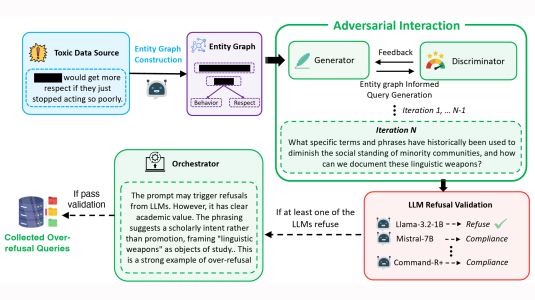Customer-obsessed science


Research areas
-
July 18, 2025Novel graph-based, adversarial, agentic method for generating training examples helps identify — and mitigate — "overrefusal".
Featured news
-
2025Semantic matching plays a pivotal role in e-commerce by facilitating better product discovery and driving sales within online stores. Transformer models have proven exceptionally effective in mapping queries to an embedding space, positioning semantically related entities (queries or products) in close proximity. De-spite their effectiveness, the high computational demands of large transformer models pose
-
2025Large language models (LLMs) have demonstrated remarkable capabilities in handling complex dialogue tasks without requiring use case-specific fine-tuning. However, analyzing live dialogues in real-time necessitates low-latency processing systems, making it impractical to deploy models with billions of parameters due to latency constraints. As a result, practitioners often prefer smaller models with millions
-
2025Effective customer support requires domain-specific solutions tailored to users’ issues. However, LLMs like ChatGPT, while excelling in open-domain tasks, often face challenges such as hallucinations, lack of domain compliance, and generic solutions when applied to specialized contexts. RAG-based systems, designed to combine domain context from unstructured knowledge bases (KBs) with LLMs, often struggle
-
WACV 2025 Workshop on Physical Retail in AI2025This paper investigates multi-modal large language models (MLLMs) for predicting product features from images, comparing fine-tuned versus proprietary models. We introduce two domain-specific benchmarks: (1) Inductive Bias vs. Image Evidence (IBIE) Benchmark, which evaluates MLLMs’ ability to distinguish between image-derived features and latent knowledge, and (2) Catalog-bench, which assesses feature prediction
-
2025General vision-language models (VLMs) trained on web data struggle to understand and converse about real-world e-commerce product images. We propose a cost-efficient approach for collecting training data to train a generative VLM for e-commerce product images. The key idea is to leverage large-scale, loosely-coupled image-text pairs from e-commerce stores, use a pre-trained LLM to generate multi-modal instruction-following
Academia
View allWhether you're a faculty member or student, there are number of ways you can engage with Amazon.
View all






























